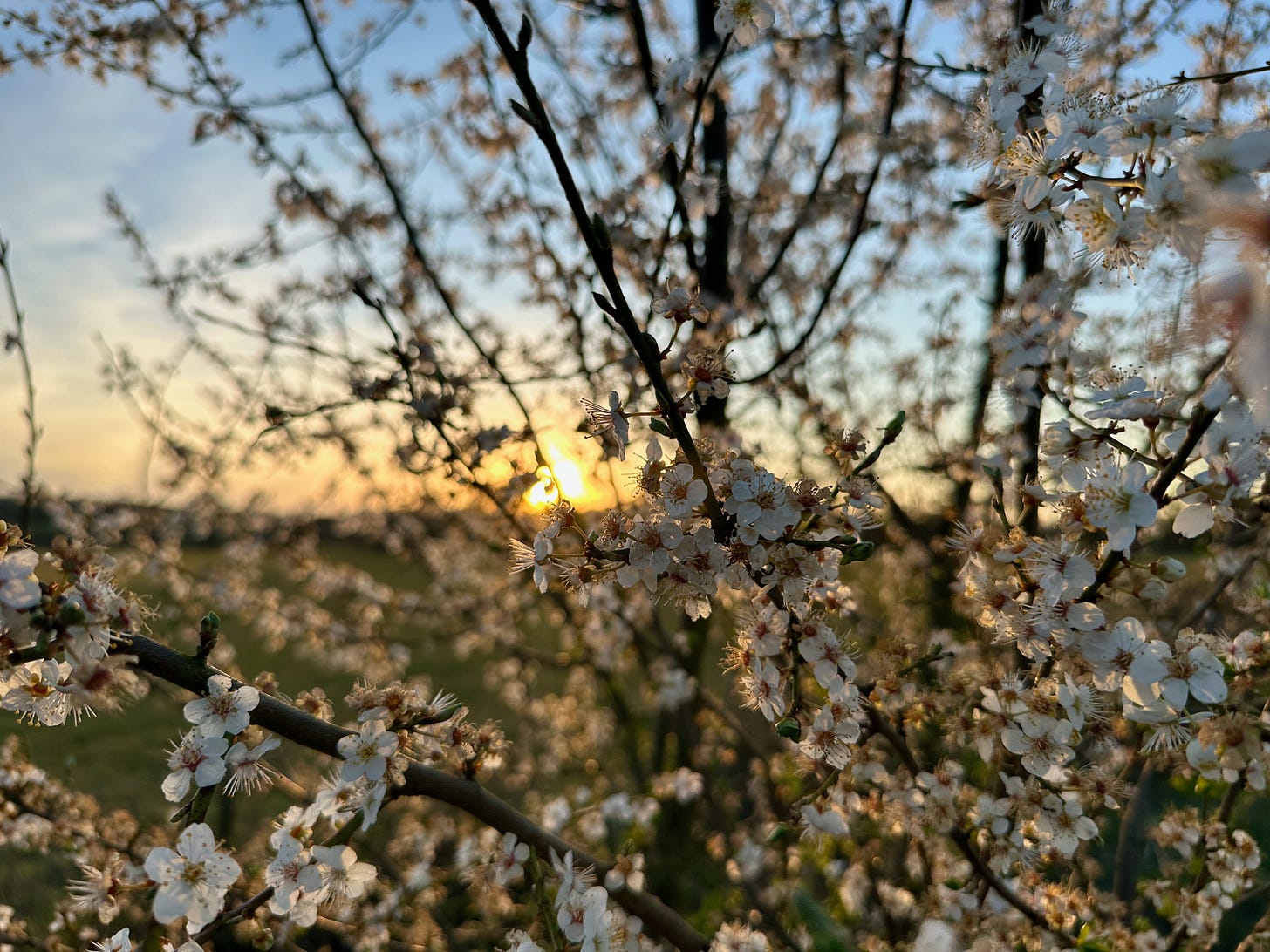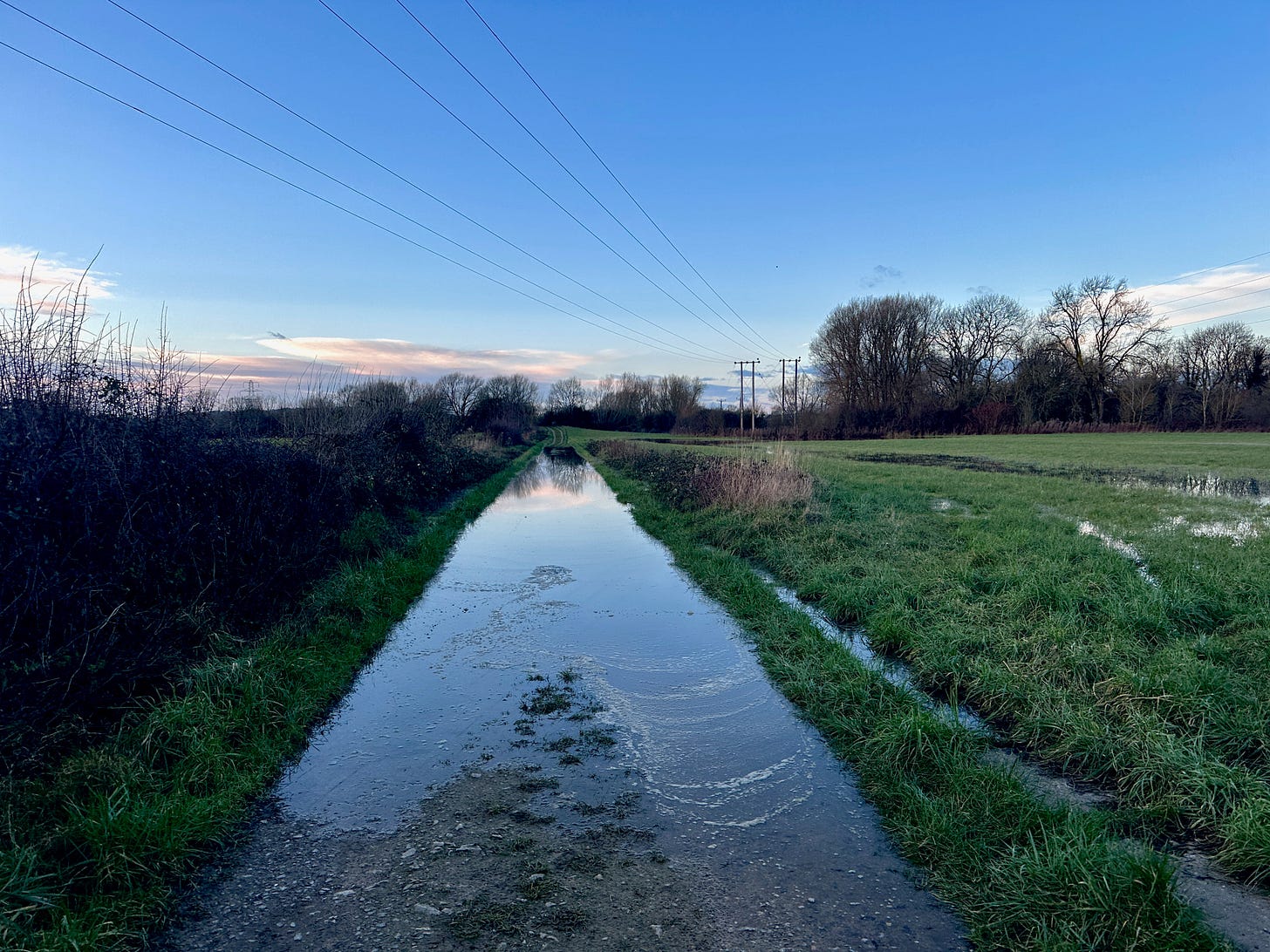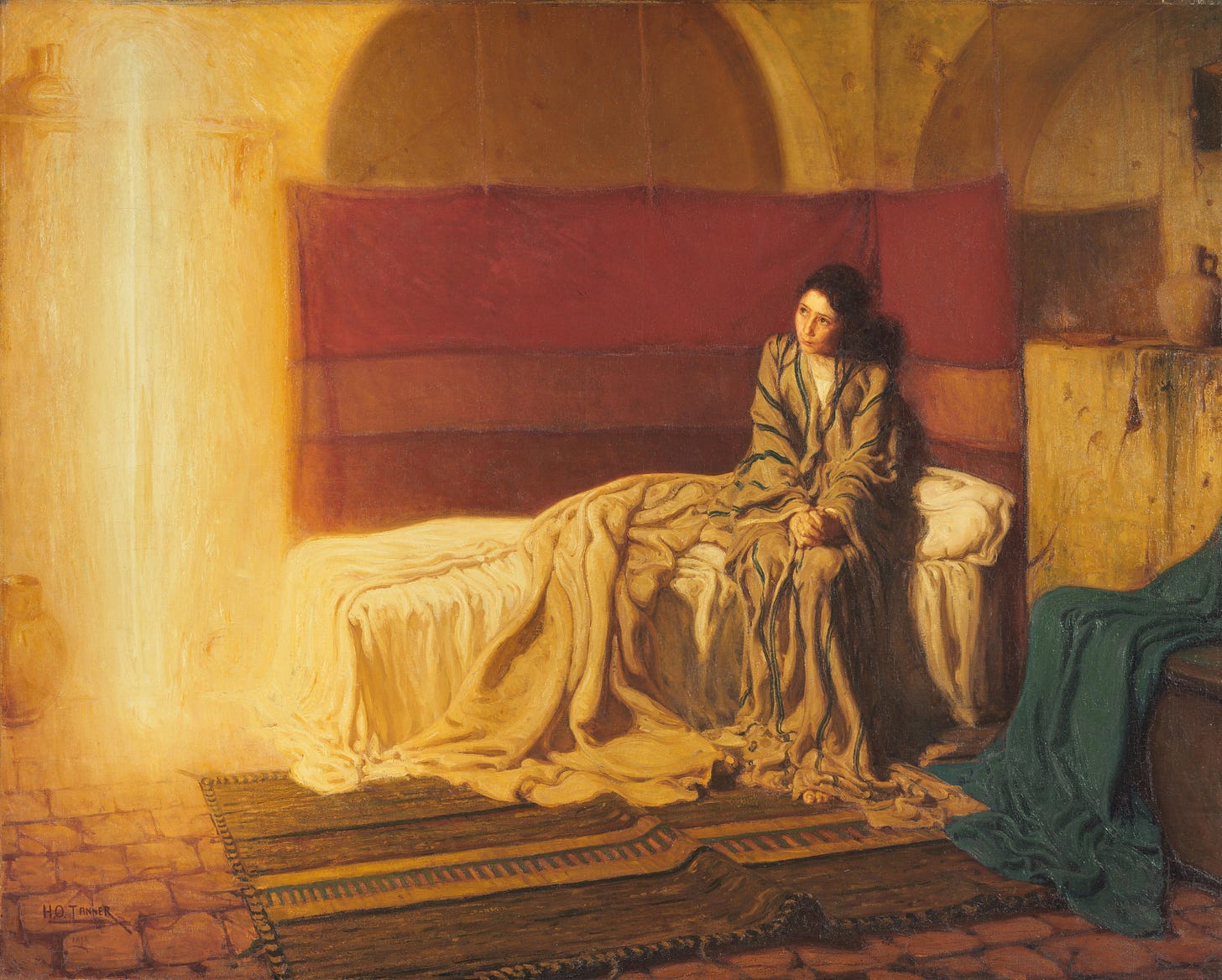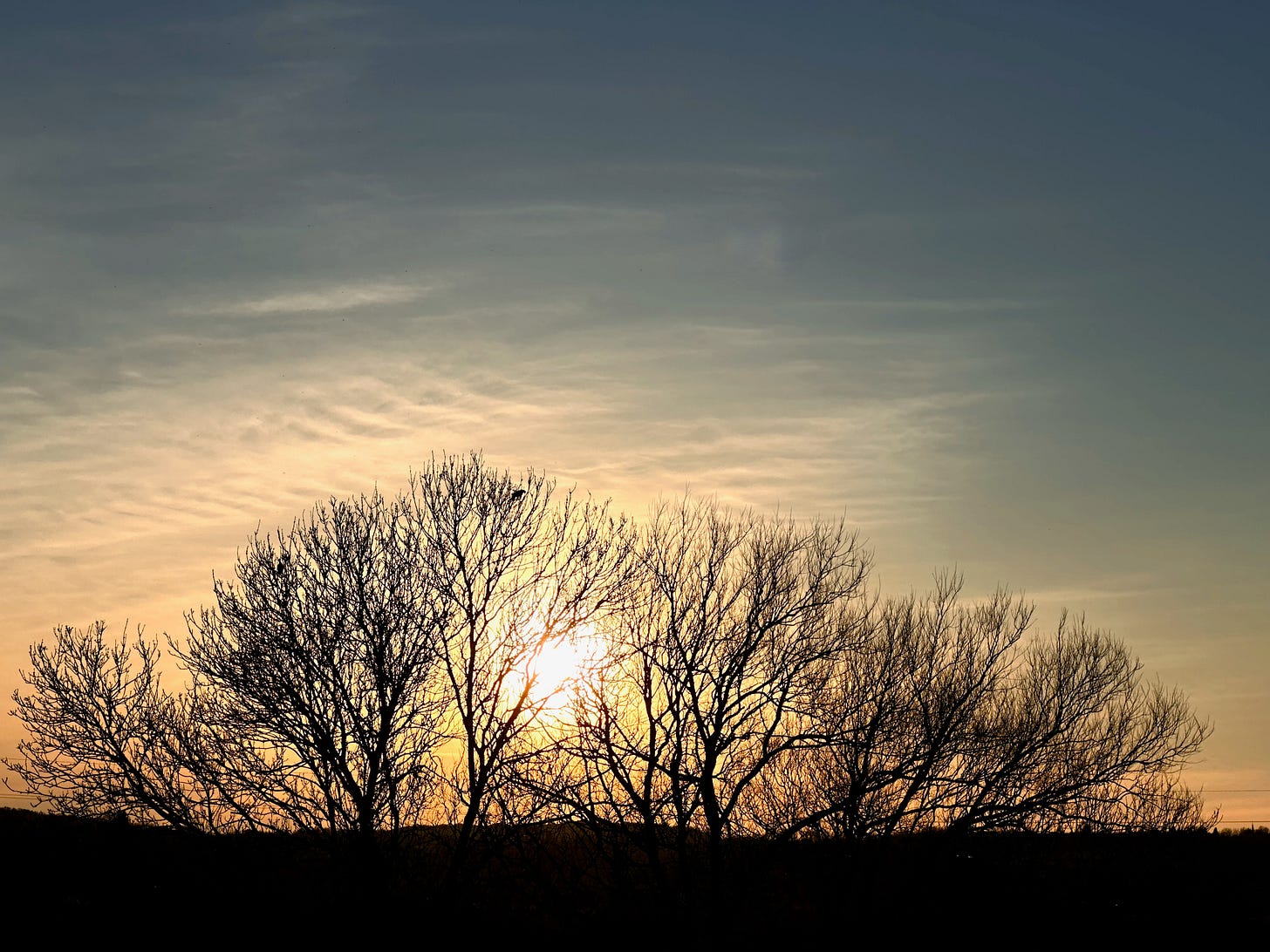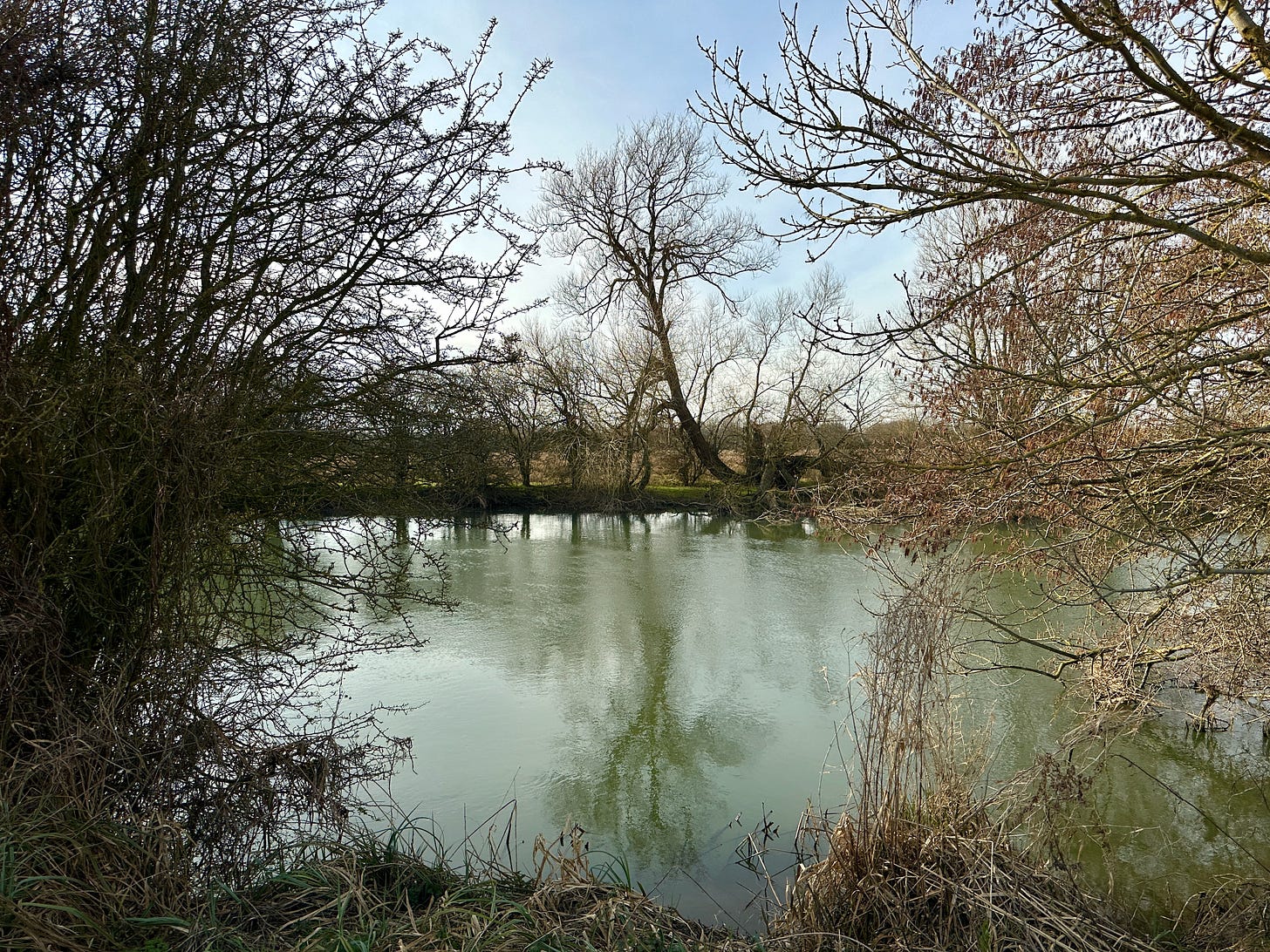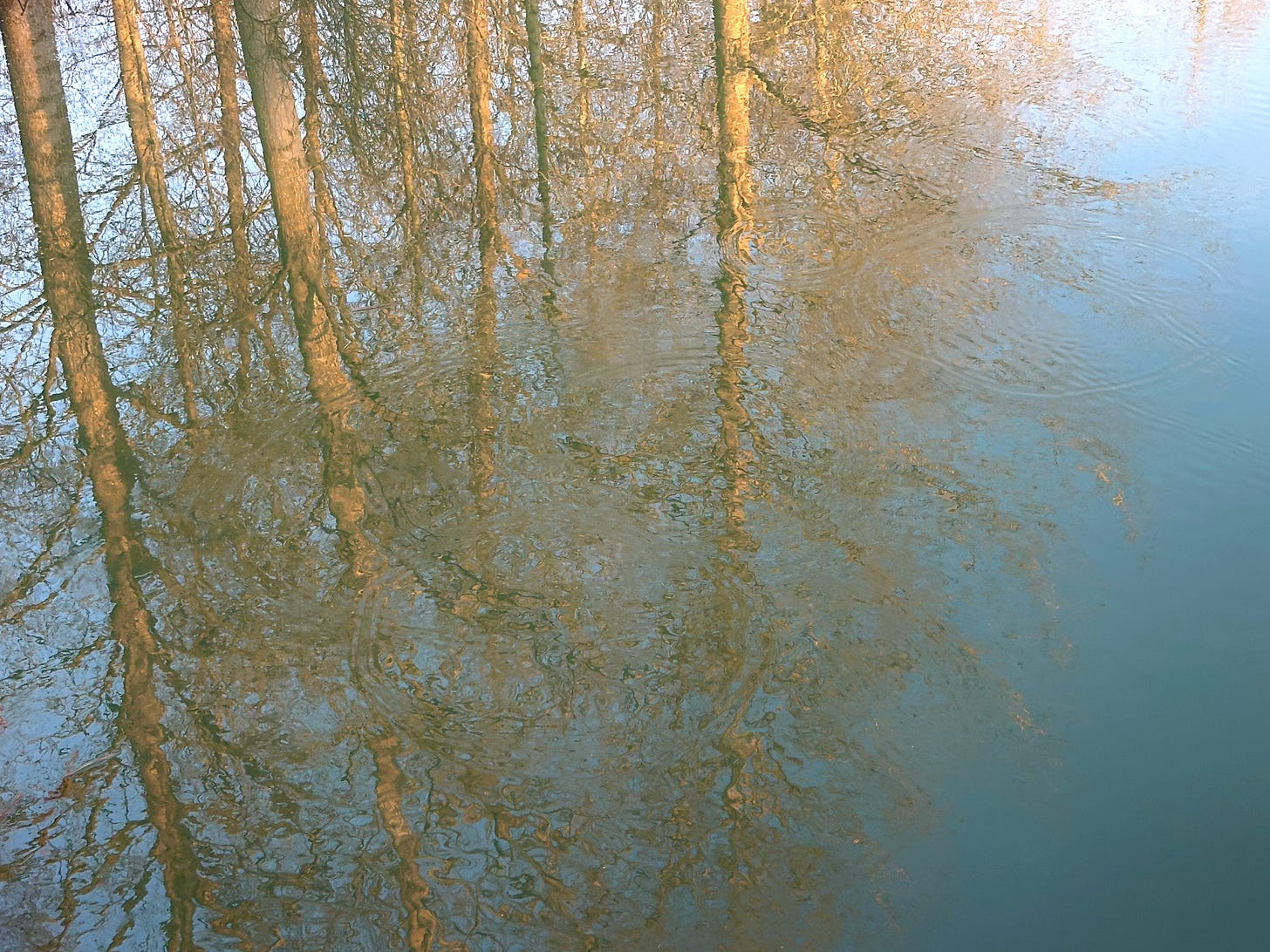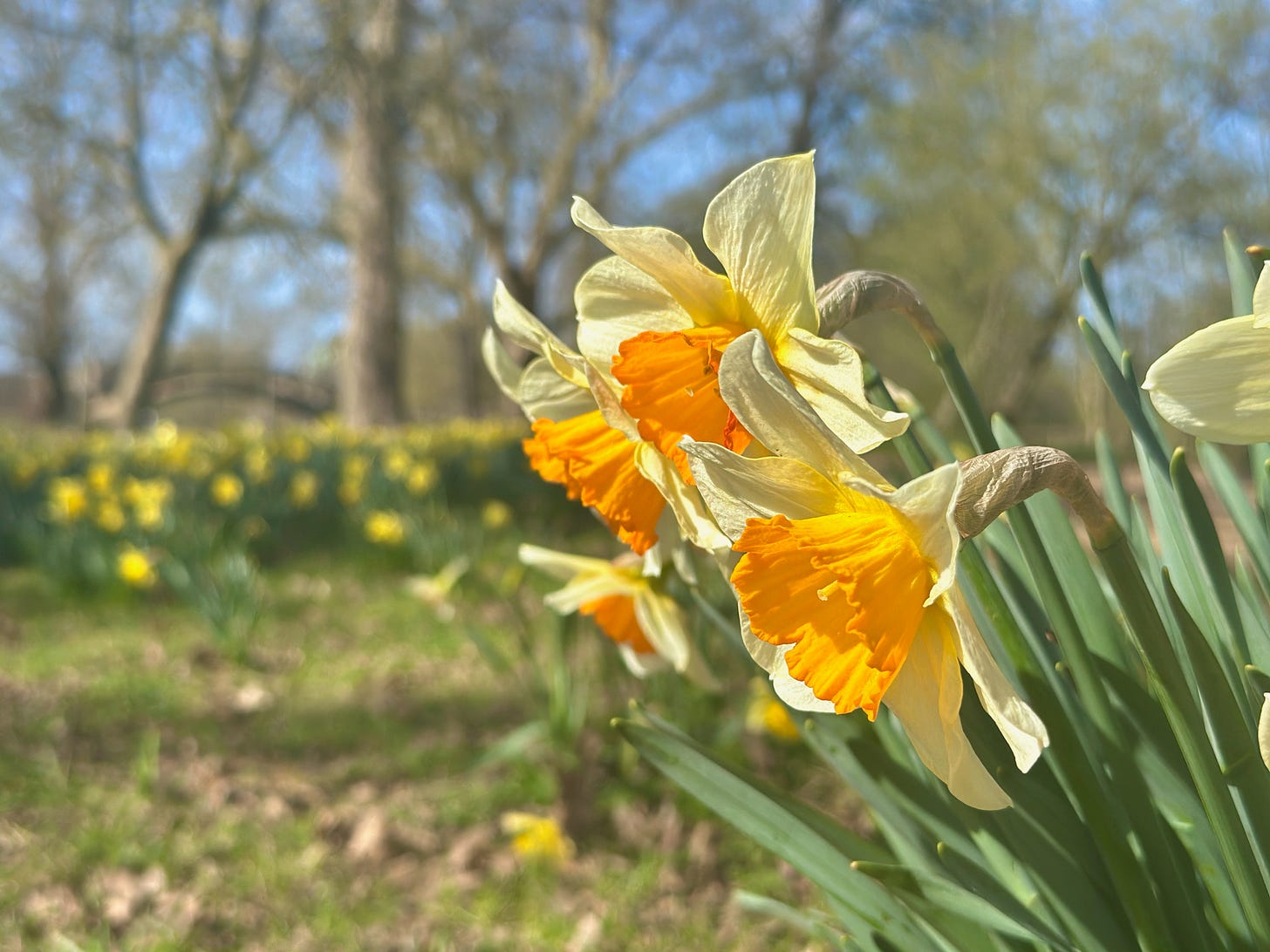Friends, a very warm Lenten greeting to you all! Whether you are a long time subscriber to my email list or have only just discovered my little project here at Sound + Spirit, I am delighted you’re here. I’ve been away for a long time in a very demanding season, which has required me to set aside my writing and music here for other things, but I’m so happy to be back at it again. The world here in Oxford is bourgeoning with springtime beauty, and it makes everything seem just a bit more possible, writing included!
This Lenten season has provided me a unique opportunity to do a close look at my presence online. This year I’ve foresworn social media, and the last couple of weeks away from my accounts have allowed me to take a bird’s eye view I don’t usually get when in the social media trenches. While I’ll be returning to Instagram and Facebook after Lent, I’ll be writing new essays here and offering exclusive photography along with videos of musical performance, narration, and more. If you like what I post on Instagram, my Substack will offer a more expansive compendium of enriching words, inspiring images, and beautiful sounds. I hope that over time, this will become a new and exciting hub for followers.
I’m also excited to announce that I am working hard at preparing a Sound + Spirit podcast, which will tentatively launch sometime during the Easter season. I’m so excited to bring you my own thoughts about music, spirituality, creativity and more, along with some very exciting special guests! Please watch this space for more info soon.
In this first post, I wanted to offer you a taste of the kind of written and photographic reflections I'll be offering here. I hope it will be an encouragement to you as you finish out your Lenten season and enter Holy Week.
Many thanks for considering becoming a subscriber. I hope to see you along the way!
Waterlogged Annunciations
Springtime in England is notoriously damp, windy and cold. The old adage is that March either comes in like a lion and goes out like a lamb, or comes in like a lamb and goes out like a lion; but there’s no version in which the fearsome felines stay away and leave the sheep to their own bucolic business. On one side of spring or the other, there’s just going to be a lot of weather.
Here in Oxford, we sit in a flood plain, which means accepting the potential and even likelihood that our gardens might turn into ponds at any given moment. Often I have set out upon a trek out into the countryside nearby, only to be turned back by a sea of ankle-deep rainwater. Anyone who has spent at least one winter in Oxford quickly learns enough respect for the local ecosystem to purchase and keep wellies at the front door, ready to literally wade out into the wild. Perhaps from a distance, it is easy to idealise its lovely cherry blossoms and meadow walks. And yet like much of the rest of the country, it staggers and blusters out of winter, showing up on the doorstep of spring rather soggy and windblown and a bit the worse for wear.
...
Right in the middle of Lent is the celebration of one of my favourite solemnities of the Church calendar, the Feast of the Annunciation. In the instant of Mary’s yes, eternal love, the everlasting Word, the Logos, takes on literal flesh, stepping out of the radiance of perfect, infinite, unchanging spirit into the delimitation a single zygote, an unseen blip of cellular matter, frail and fleeting, struggling toward embryonic form inside the womb. Soon Mary’s belly will swell as her body changes to accommodate this child growing inside of her. And this physical transformation will equally achieve a social shift for her, as the eyes of her friends and family suddenly view her in an uncertain light. Whatever the trajectory of her life had been before, now it has been utterly undone. It will be a full nine months before the promise given in the moment of Annunciation is vindicated in its appearance in the birth of Jesus. Even in this nascent moment, as she listens to the angel, she must sense some of this: that her life, not only her body but her very being itself, is about to be seismically reshaped.
This is the irrational season
When love blooms bright and wild
Had Mary been filled with reason
There’d have been no space for the child.
~Madeleine L’Engle
...
The reality of the Incarnation is visceral, physical, primal. Ancient Christian tradition held that the Annunciation was not the only event to take place on the 25th of March; it was believed to share its feast day with the day upon which God created humankind. For early Christians, this conflation was no accident. The Incarnation is the recapitulation of the very moment of creation: in the beginning, God spoke the world into being; and in the Incarnation, God spoke himself into the world, that it might be reunited, body and soul, with him. Incarnation is re-creation, the story of new beginnings.
But what does the creation narrative actually tell us about itself? In Genesis, the first beginning of the universe, the initial depiction we encounter of God’s creation is not the teaming, glorious earth of the sixth day, but rather, the strange image of a vast, shadowy world, ‘formless and void.’ This boundless expanse, not yet solidified into particularity, is the first step of God’s creative act, and from this origin of unrealised potential, day by day, he speaks light, life, order, and beauty into existence, drawing that formlessness into the dazzling multiplicity of formfulness, great and small. In his first act of creating the universe, God reveals to us a crucial pattern about how his creative goodness operates. Certainly, as eternal spirit infinitely exceeding the limitations of created being, he might have simply spoken the word and called all creation into its completed form in an instant. Instead, in condescending to work within the bounds of time and space, he reveals to us his nature as the one who brings light out of darkness, order out of chaos, meaning out of meaninglessness.
Thus, it is no surprise that in the Annunciation, we see this same principle at work again. God does not descend from the heavens a fully formed and mature human ready to conquer the world, but rather once more deigns to work within the constraints of time and corporeality. The spirit moves over the waters of Mary’s womb, and in that formlessness God once again speaks light into existence, the Light that shines in the darkness and which the darkness cannot comprehend. And yet, in honouring the delimitations of time, this new creation begins, as with the first, in amorphous uncertainty, an embryo not yet formed into the recognisable image of a human. Only over the coming months do the bounding lines of a new creation take form, as the unborn child takes shape in his mother’s womb to be born into the world. What God displayed in the creation of the world, he displayed even more radiantly in the re-creation of the world. For in Jesus, God himself becomes part of the groaning creation, clothed in its materiality, and experiencing its long, slow development out of formlessness into the fulness of its intended end. For God’s creativity is thorough and complete; it refuses to leave any stone unturned in the process of drawing all things back to the one in whom they have their being. As the fourth-century Cappadocian father Gregory the Theologian says, ‘that which is not assumed is not healed.’
...
This is what the annunciation of the Incarnation is like in our lives too. Only rarely is it the lily in the window and the elysian figure of the holy messenger alighting in gentle radiance. Wherever it occurs in our lives, its reality turns up the soil of our very foundations. It will not abide us as we are, for it seeks our re-creation. All of the familiar, frost-hardened earth of our wintertide hearts must be disintegrated into a holy muck and mire, a muddy, malleable sludge which might then be formed into something new.
This painful unmaking of our past selves is, despite all seeming evidence to the opposite, the first sign of God’s act of re-creation happening in us. Like the universe in those incipient moments of creation, before we can be formed and full, we must first be formless and void. We, like the child in the womb, must first accept our embryonic state of our souls before we are ready to be born into the fulness of what God promises. God loves us too much, is too great a master of his craft, to skip ahead in the process. He works in time and over time, and is far more patient than us. He sees with perfect clarity what is so often invisible to us: the slow knitting back together of all that is disparate in us into an elegant unity again.
In Mary’s Annunciation, the outcome was not immediate. The radiant light of the celestial visitation receded, leaving only the ordinary world from moments before. Surely Mary could hardly have had any visible assurance that what had been committed to her would indeed come to pass. Rather, her fiat, which literally means ‘let it be,’ would become the word of faith that in time, would be brought into the fulness of being; a word that had to be lived out in Mary’s long faithfulness.
For us, who struggle through the flooded trenches of the necessities and frailties of life, we too are called to such a fiat. Faith, as Hebrews 11:1 tells us, is ‘the assurance of things hoped for, the conviction of things not seen.’ Our task becomes to let every moment – even those moments when we feel we our lives are nothing but the constant repetitions of fallibilities – act as an opportunity to reaffirm the annunciation of God’s promise in our lives toward a future we can’t yet imagine. We are called, with eyes of faith, to once again return ourselves to the mercy of God, in confession and praise, saying to him, ‘let it be.’ ‘The one who calls you is faithful,’ 1 Thessalonians 5:26 states; ‘he will do it.’
...
For those of us who participate in the season of Lent, our temptation is to treat it like New Years 2.0. After failing to keep all those resolutions we set out at the onset of the year, we get another chance to give up those things we know are detrimental for us: sweets and drinks, social media, and any other assortment of distractions, bad habits, and addictions. Perhaps, as a supplement, we add something good to our lives, like exercise or volunteering. Some go to extremes to shrive themselves, taking cold showers and participating in extended fasts for days on end. No matter which pathway we might take, the temptation is the same in each instance: we imagine that through an almost Nietzschean act of our own willpower, this time, we’ll get it right; this time, God will see that we’re serious about our lives. We will finally prove our ability to be worth his attention.
Understood in this way, Lent becomes, on the one hand, the construction of a fortress of fortitude and pride of the self, holding even God at the gate of our self-enclosed triumph; or the self-flagellation of yet another year of failure, with despair breeching our walls and utterly overcoming us.
But the point of Lent is something else entirely.
You see, Lent isn’t ultimately about the penances we take up or our acts of charity, or any other programmatic element which we take up in our pursuit of the season. Rather, Lent is about the same thing that every liturgical season, every feast day, and indeed every moment of every day is about: encountering the God who loves us and seeks to transform our lives evermore into his image.
In Lent, we confront the reality of our persistent fragility. God is not surprised by our failures in Lent; indeed, in those failures, God awaits us with deep and abiding mercy. In Lent, we confront our human fallenness and come to see that nothing we set out to accomplish on our own can possibly come to pass. It is God who begins the work in us; and it is he who is faithful to complete it.
When we begin to see this reality, then we capture what the ancient Easter prayer, the Exultet, named the felix culpa: ‘O Happy fault, that earned for us so great and glorious a redeemer.’ The felix culpa invites us into the mystery in which somehow, our very failures become the locations of God’s greatest work. Lent is the revelation of this reality; and it is only from this crucial turning point that we might let go of our capacity to understand and open ourselves to the mercy of God’s restorative power.
…
Friends, as Lent comes to a close, whether you have kept your penances or broken them, as you enter into Holy Week and the Annunciation of Jesus's sacrificial love, may you trudge out into the midst of the wetlands of your world, not afraid of what you find there. May you see in it the first step of God’s re-creation of you, that even now, his spirit hovers over your waters, seeking to speak light into all that is formless and void in you. May you be quick to turn away from what you can understand and instead rest in what God declares remains true. And may you be assured that, even if it may not seem so now, the waterlogged fields of your soul are congealing and coagulating, grain by grain, particle by particle, into the bourgeoning green of new and abundant life.




